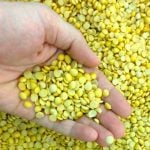Most farms don’t do even one yearly soil nutrient test per field, but maybe they should be doing three. Three tests would enhance farmer understanding of in-field variability in a way that one test cannot. Why it matters: Soil tests that demonstrate the variability of field conditions might prompt producers to adopt a three-test approach.








